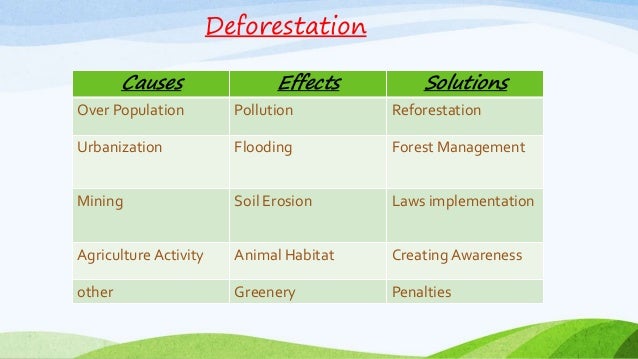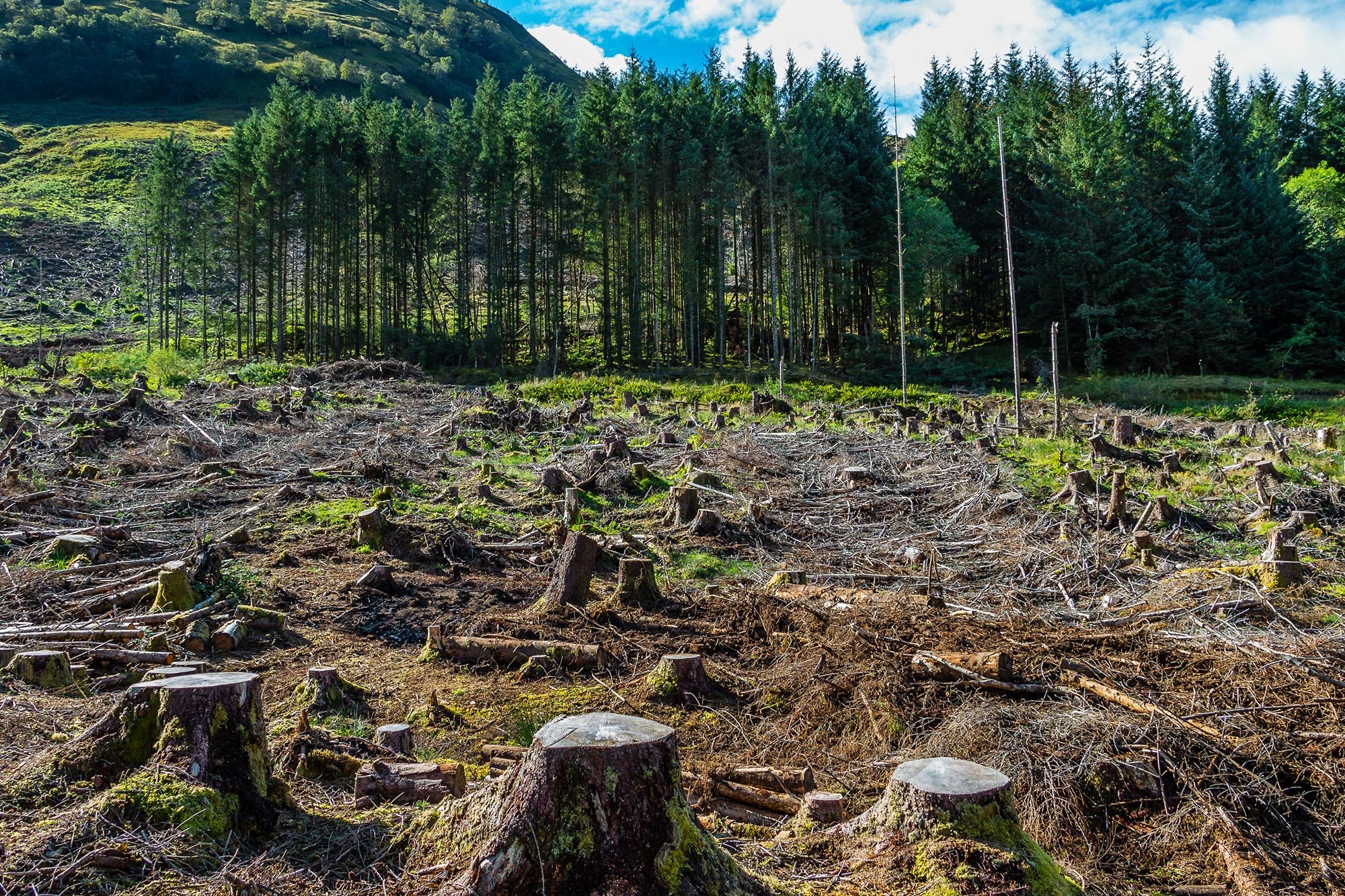Students will read the cartoon below, after which a discussion will ensue as to what the cartoon is about and who has a positive attitude towards preserving the environment. They will tell of the uses/value of plants in the environment orally.

Watch youtube video clip (Importance of plants to humans and animals -) They will glean important information in their groups about their uses, how they are abused, and how humans can protect /preserve them.
Apart from being cut down, what are some other ways in which trees are destroyed.
What is happening in the picture below?
What problems can this practice cause?
|
STATEMENTS |
Supported by Source 1 |
Supported by source 2 |
Supported by both sources |
|
Deforestation can lead to soil erosion |
|
|
|
|
One method of deforestation is slash and burn |
|
|
|
|
Deforestation can cause famine |
|
|
|
|
Deforestation can contribute to climate change |
|
|
|
Grade 6 Science – 5E Lesson Plan
Topic: Environment
Focus Question: Why is it important to care for the environment?
Duration: 1 hour
Objectives
By the end of the lesson, students will be able to:
-
Justify the importance of conserving the natural environment.
-
Show concern for the impact of humans on the environment.
-
Observe, collect, and record information regarding the interacting factors within the environment.
Materials/Resources
-
Chart paper, markers
-
Tablets or laptops (for STEM research activity)
-
Sample images of local natural environments
-
Worksheet: Environmental Observation Log
-
Video clip on human impact on the environment (e.g., pollution, deforestation)
-
Recyclable materials (for optional hands-on extension)
5E Instructional Model
Engage (5–7 minutes)
Activity: Show a short video (2–3 minutes) highlighting human impact on the environment (pollution, deforestation, overfishing, etc.).
Ask:
-
What are some things you noticed?
-
How do these things affect the environment and people?
-
Why do you think we should care about this?
🔄 Purpose: To activate prior knowledge and generate curiosity.
Explore (10–12 minutes)
STEM Activity: "Eco Walk – Observation & Data Collection"
-
Students work in pairs and use tablets (or clipboards if tech is unavailable) to observe an area on the school compound (e.g., garden, garbage area, trees).
-
They will complete a worksheet to record interacting factors like:
-
Presence of animals/insects
-
Types of plants
-
Human activity/effects (e.g., litter, broken branches)
-
Weather conditions
-
💡 Differentiation:
-
High-level learners extend by classifying biotic/abiotic factors.
-
Support learners get guiding questions and picture-based prompts.
-
Use a printed template with icons for ELL or students with language challenges.
Explain (10–12 minutes)
Discussion & Notes
-
Bring class together to discuss what they observed.
-
Use a T-chart: Human Impact vs. Natural Interactions
-
Introduce or reinforce the definition of environment, natural vs. human-made impact, and the importance of conservation.
-
Students summarize key points in their notebooks.
🧠 Teacher prompts:
-
How do plants and animals depend on each other?
-
What happens when humans interfere?
-
Why should we protect these relationships?
Elaborate (15 minutes)
STEM Design Challenge (Mini):
Students brainstorm ways to reduce human impact based on their observation.
-
In small groups, they design a simple solution (poster or model idea) for one issue they observed (e.g., a compost bin, trash sorting station, awareness poster).
-
Present briefly (1–2 minutes each).
✏️ Differentiation:
-
Group roles: designer, writer, speaker (assigned based on strengths).
-
Visual aids and sentence starters provided.
Evaluate (10 minutes)
Three-Tier Assessment
| Tier | Task | Purpose |
|---|---|---|
| Tier 1 | Match and label interacting environmental factors from a diagram. | Checks basic understanding of environment |
| Tier 2 | Write a short paragraph justifying why it's important to conserve the environment. | Evaluates comprehension and reasoning |
| Tier 3 | Use observation data to propose one way their school can reduce environmental harm. | Assesses application and higher-order thinking |
Closure (1–2 minutes)
Revisit the focus question: "Why is it important to care for the environment?"
Ask for 2–3 volunteers to share their ideas.
Encourage students to reflect on:
-
One thing they observed
-
One way they can help the environment this week
Home Extension (Optional)
Ask students to observe their home/community environment and identify one human activity affecting nature. Record it and bring a picture or description for the next class.






No comments:
Post a Comment